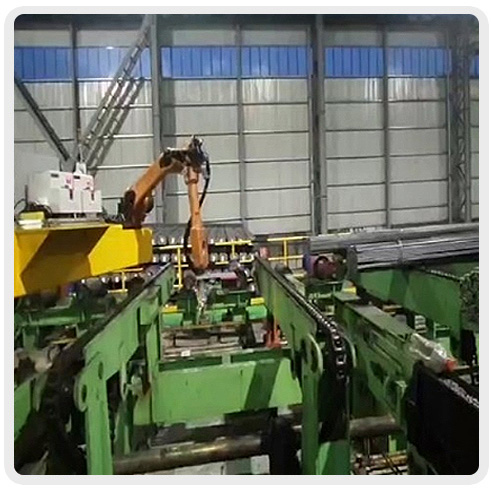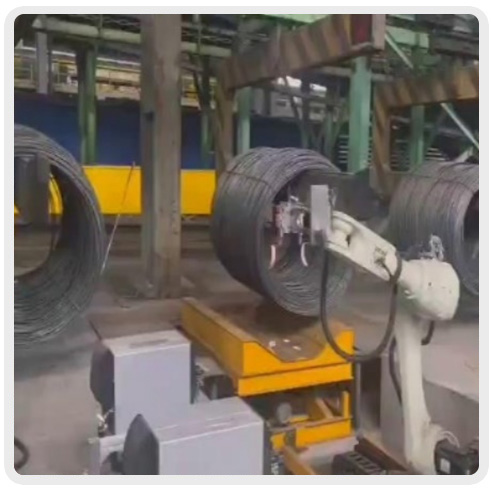Loading...
Roll Ring Replacing Assistance Arm
Currently, the Rolling Ring Replacement process in rolling mills is carried out manually, which is not only risky but also time-consuming. The Roll Ring Replacing Assistance Arm is designed to replace the need for cranes and manual labor in this task, providing a safer and more efficient alternative.
Key Features:
- Automated Roll Ring Replacement: The Assistance Arm is engineered to automatically handle the removal and replacement of roll rings, reducing the physical effort required from operators and minimizing the risk of injury from manual lifting and positioning.
- Replacement Efficiency: The system significantly improves efficiency by reducing the time spent on roll ring changes. This allows the mill to run more continuously and with less downtime, contributing to higher overall productivity.
- Labor Reduction: Replaces the need for manual labor and crane systems, which are typically used to handle heavy roll rings. This leads to a reduction in labor intensity and makes the process less dependent on human strength and manual handling.
- Enhanced Safety: By automating the roll ring replacement, the Assistance Arm reduces the risks of workplace accidents, particularly from the physical strain and hazards of handling large, heavy components manually.
- Precision and Accuracy: The system provides high precision during the replacement process, ensuring that roll rings are positioned correctly without errors, which helps maintain the quality of the production process.
- Improved Mill Productivity: With faster roll ring replacement times, the rolling mill can reduce idle time and optimize machine uptime, thus improving overall production capacity and efficiency.
Key Benefits:
- Increased Safety: Reduces manual handling risks, improving safety for operators.
- Higher Efficiency: Shortens roll ring replacement times, enabling faster turnarounds and more continuous production.
- Reduced Labor Costs: Minimizes the need for heavy manual labor and crane use, leading to cost savings.
- Improved Precision: Enhances the accuracy of roll ring placement, maintaining operational quality.
- Operational Continuity: Less downtime between roll ring replacements increases overall mill output and productivity.
Applications:
- Rolling Mills: Essential for steel, aluminum, and other metal industries where roll rings need to be replaced regularly as part of the continuous production process.
- Heavy Manufacturing: Can also be adapted for other industries requiring the handling of heavy equipment or machinery parts.

